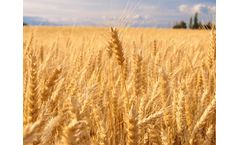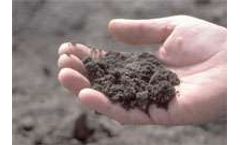Refine by
Grain Yield Articles & Analysis
27 news found
In a recent NUTRI-CHECK NET webinar, ADAS crop physiologists Dr Sarah Kendall and Dr Tamara Fitters shared how grain analysis and post-harvest reviews can play a pivotal role in refining nutrient strategies for future seasons. ...
Then there was the heat wave at the end of June, right in the middle of ripening. Yields have often been between 35 and 40 dt/ha, so considerably better than last year and in the range of the long-term average yield, but not the expected massive improvement. ...
This helps farmers monitor pest populations and weed activity on their land, and allows farmers to increase yields and make more money. 3. Yield Monitoring and Forecasting — The yield information can be collected either from satellite imagery and drones or from the sensors installed on the farmer’s machinery. These ...
Based on historical data since 1980, lower grain yields are not a certainty with late-planted corn, he said. “Since 1980, there have been significant planting delays associated with wet spring weather in nine years,” Thomison said. “And while, in five of those years, yields were lower than the state average, in four of those ...
Nowhere in the world is the average grain yield as high as in the Netherlands, where it is over ten tonnes per hectare. ...
Straw from previous harvests can be used to help increase crop yields and improve the efficiency of water use in arid regions, finds a new study from China. ...
The combination of increased crop yield and the additional earthworms produced as a result of the process led to a substantial increase in output compared to a traditional composting system. ...
Over the four years of field trials, the average yield increase for the leading NUE rice line was 30 percent over the conventional controls. In the fourth-year trial, two additional NUE rice lines increased grain yield by 24 to 28 percent at 17 percent of normally applied nitrogen fertilizer in Colombia, and by 10 to 22 percent at 50 percent of ...
The test is designed to evaluate wheat varieties, blends, brands and breeding lines for yield, grain quality and other performance characteristics, said Laura Lindsey, a soybean and small grains specialist with Ohio State University Extension. ...
“Rice farmers can decrease their nitrogen fertilizer and pesticide use by around 20%, and increase their yield by 10% by using the ‘three controls technology’ (3CT),” says Dr. ...
During this time Agrisure Viptera has demonstrated major benefits for growers, preventing significant yield and grain quality losses resulting from damage by a broad spectrum of lepidopteran pests. ...
BySyngenta
Among other things, Beijing adopted a policy of grain self-sufficiency, an initiative that is now faltering. Since 2006, China’s grain use has been climbing by 17 million tons per year. ...
Researchers on the project are assessing the amount of variation in grain yields, biomass yields, soil moisture and soil water quality among various cropping systems and landscape positions. ...
Recent research funded by the GRDC, Queensland Alliance for Agriculture and Food Innovation (QAFFI), Department of Agriculture, Fisheries and Forestry Queensland (DAFF) and NSW Department of Primary Industries (NSW DPI) and presented by Matthew Gardner, NSW DPI Research Agronomist, Tamworth, has highlighted the importance of managing crop nitrogen (N) nutrition to yield ...
Since 2009, Cereshas worked with USAID, which delivers economic and humanitarian assistance on behalf of the U.S. government, under a $3.0 milliongrant to increase rice yields, especially under stress conditions and on poor soils. Indiais expected to become the world's most populous nation, but its crop yields lag behind other countries at 58th in the world. ...
ByCeres
Australian scientists have successfully carried out field trials of a salt-tolerant durum wheat, boosting grain yield by 25 per cent in salty soils. Durum is one of the most widely grown cereals in the world, but in saline soils it is vulnerable to salt build-up in the leaves, which can hinder growth and reduce yields, threatening food security. ...
When they were calculated per unit yield of grain, however, emissions were significantly greater under no-tillage than conventional tillage. ...
With the world’s population set to reach 8.9 billion by 2050, CSIRO scientists are hunting down and exploiting a number of wheat’s key genetic traits in a bid to substantially boost its grain yield. The rate of wheat-yield improvement achievable through conventional plant breeding and genetic engineering alone is not fast enough ...
The losses ranged from 30 to 50 per cent of the expected grain yield of a country's wheat production. And last season, an epidemic of a virulent new kind of stripe rust caused wheat losses of up to 40% in Western Asia. ...
Because soybeans require more nitrogen than most commercial crops, Wiersma hypothesized that adding nitrogen fertilizer could help increase yields in nutrient poor soil. Several soybean varieties along with nitrogen fertilizer were tested from 2003-2005 on soils where soybean has historically exhibited mild to severe iron deficiency. ...














